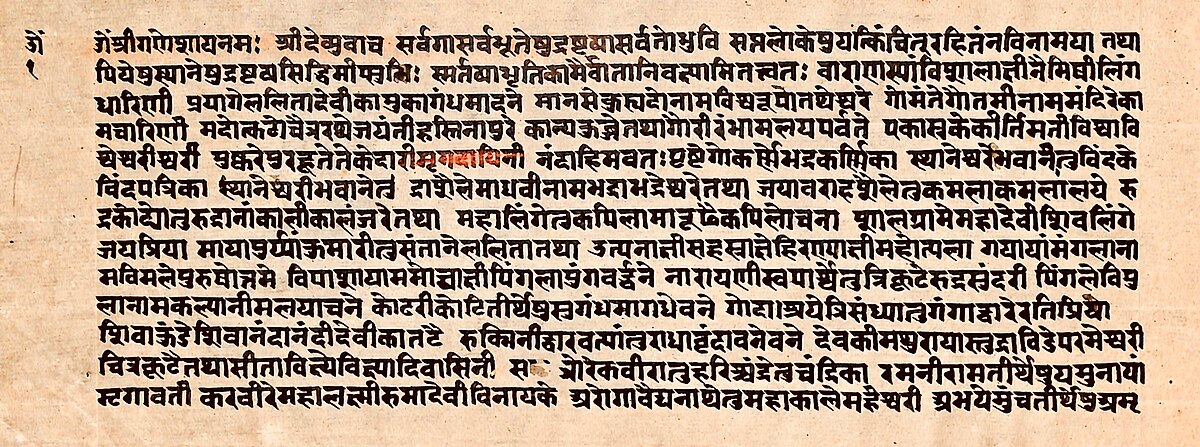Matsya Purana English Pdf
Matsya Purana (literally, the ancient chronicle of Matsya) is one of the oldest of the 18 post-Vedic Hindu scriptures called the Puranas. The scripture is a composite work dated to c. It narrates the story of Matsya, the first of ten major Avatars of the Hindu god Vishnu. During the period of mahapralaya, Lord Vishnu had taken Matsya Avatar (fish incarnation) to save the seeds of all lives and Manu.

Matsya Purana contains a comprehensive description of Manu and Matsya avatar. The Padma Purana categorizes Matsya Purana as a Tamas Purana (Purana of darkness or ignorance). See more at Wikipedia.org. Copyright: © This article uses material from Wikipedia ® and is licensed under the and under the Dictionary source: More.
Vishnu as Matsya Affiliation of Matsya (: मत्स्य, lit. Fish) is the fish in the of Vishnu. Matsya is described to have rescued and earthly existence from a great deluge. The earliest accounts of Matsya as a fish-saviour equates him with the Vedic deity. Download pokemon xy 3ds emulator. The fish-savior later merges with the identity of in post-Vedic era, and still later as an avatar of.
Translations of all 18 Maha Puranas of Sri Vyasadeva in English in PDF format. Purana Garuda Purana Varaha Purana Bhagavata Purana Matsya Purana. Kurma Purana. Bhagavad Maha Purana. Linga Purana. Narada Purana. Skanda Purana. Garuda Purana. Matsya Purana.
The legends associated with Matsya expand, evolve and vary in Hindu texts. These legends have embedded symbolism, where a small fish with Manu's protection grows to become a big fish, and the fish saves earthly existence. Matsya iconography sometimes is zoomorphic as a giant fish with a horn, or anthropomorphic in the form of a human torso connected to the rear half of a fish. Picture of Matsya Avatar- Fish incarnation of Lord Vishnu The section 1.8.1 of the ( Yajur veda) is the earliest extant text to mention Matsya and the flood myth in Hinduism.
It makes no mention of Vishnu, and instead identifies the fish with Prajapati-Brahma. The central characters of this legend are the fish (Matsya). The character Manu is presented as the legislator and the ancestor king.
One day, water is brought to Manu for his ablutions. In the water is a tiny fish.
The fish states it fears being swallowed by a larger fish and appeals to Manu to protect him. In return, the fish promises to rescue Manu from an impending flood. Manu accepts the request. He puts the fish in a pot of water where he grows. Then he prepares a ditch filled with water, and transfers him there where it can grow freely. Once the fish grows further to be big enough to be free from danger, Manu transfers him into the ocean.
The fish thanks him, tells him the date of the great flood, and asks Manu to build a boat by that day, one he can attach to its horn. On the predicted day, Manu visits the fish with his boat.
The devastating floods come, and Manu ties the boat to the horn. The fish carries the boat with Manu to the high grounds of the northern mountains (interpreted as ). Manu then re-establishes life by performing austerities and by performing (sacrifices). According to Bonnefoy, the Vedic story is symbolic. The little fish alludes to the Indian 'law of the fishes', an equivalent to the '. The small and weak would be devoured by the big and strong, and needs the protection of the legislator and king Manu to enable it to attain its potential and be able to help later. Manu provides the protection, the little fish grows to become big and ultimately saves all existence.
The boat that Manu builds to get help from the savior fish, states Bonnefoy, is symbolism of the means to avert complete destruction and for human salvation. The mountains are symbolism for the doorway for ultimate refuge and liberation. Mahabharata [ ]. Matsya pulling Manu's boat The tale of Matsya appears in chapter 12.187 of the Book 3, the, in the epic. The legend begins with Manu performing religious rituals on the banks of the Cherivi River. A little fish called Matsyaka comes to him and asks for his protection, promising to save him from a deluge in the future. The legend moves in the same vein as the Vedic version.